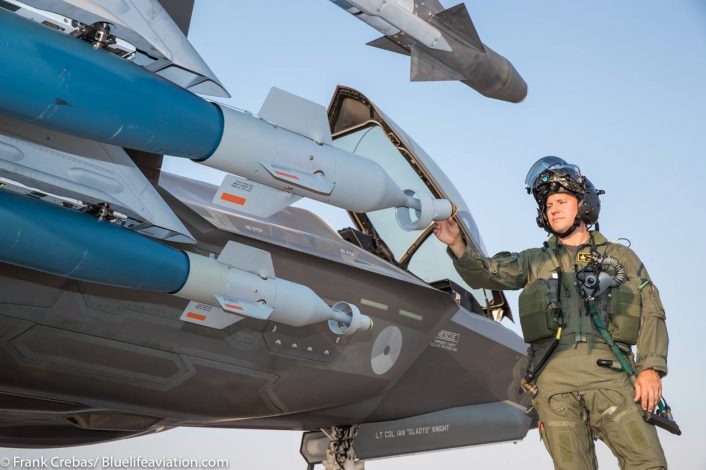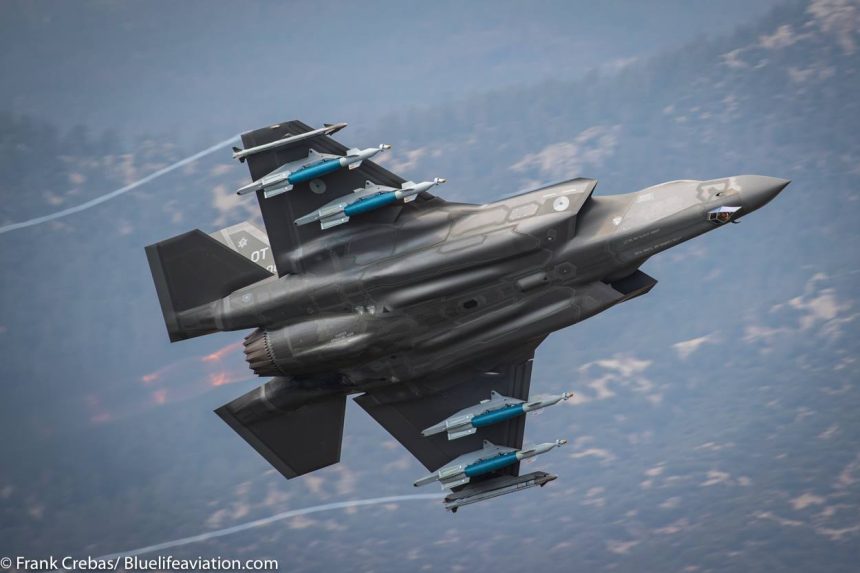The Dutch F-35 based at Edwards Air Force Base has carried out tests with the Lightning II in “Bomb Truck”/”Beast Mode” configuration lately.
323 TES (Test & Evaluation Squadron), the Dutch unit based at Edwards Air Force Base and responsible for the F-35 Operational Test and Evaluation Phase (OT&E) as part of the Joint Operational Test Team, has carried out a series of tests with external weapons last month.
Some of the missions flown by the RNlAF (Royal Netherlands Air Force) F-35A Lightning II involved the use of GBUs and AIM-9X AAM (Air-to-Air Missile).
A week of firsts! First external GBU-49 direct hits on high speed targets by @pbsmaal earlier this week. Today the first simulated 9X kill in a high threat Defensive Counter Air trial by @BertdeSmit. Proud of the team! #F35 #F35Friday #F35naarNL. pic.twitter.com/KkZSYs6gZd
— 323 TES Commander (@IanKnight35) July 14, 2018
World-renowned photographer Frank Crebas went to California to catch some cool images of the Dutch F-35s at work with the heavy load-outs.
Here it is:
As you can see, the aircraft was flying with 4x GBU-12 500-lb Laser Guided Bombs and 2x AIM-9X Sidewinders on the external pylons.
“I shot the video and photos on Thursday Jul. 26 at the Needles Lookout in California”, Crebas told us in a message. “This location is a navigation point on the famous Sidewinder low flying route of which the JEDI transition a.k.a. the Starwars Canyon is also part of. It was the very first time that the Dutch OT&E unit flew with a full external load out after they previous few with just the AIM-9X and ‘just’ two GBUs. The jets where flown by Colonel Albert ‘Vidal’ de Smit, the commander of the Edwards detachement and Lt Col Ian ‘Gladys’ Knight who is the commander of 323 TES. 323 is participating with just two aircraft and only 52 personnel in the F-35 OT&E at Edwards AFB alongside the US and UK.”
The external weapons configuration tested by the Dutch F-35 is also known as CAS (Close Air Support) “Beast Mode” (or “Bomb Truck”) configuration. Others call any configuration involving external loads a “Third Day of War” configuration as opposed to a “First Day of War” one in which the F-35 would carry weapons internally to maintain low radar cross-section and observability from sensors. However, as a conflict evolves and enemy air defense assets including sensors, air defense missile and gun systems and enemy aircraft are degraded by airstrikes (conducted also by F-35s in “Stealth Mode”) the environment becomes more permissive: in such a scenario the F-35 no longer relies on low-observable capabilities for survivability so it can shift to carrying large external loads.
In “Beast Mode“, exploiting the internal weapon bays, the F-35 can carry 2x AIM-9X (pylons), 2x AIM-120 AMRAAM (internal bomb bay) and 4x GBU-31 2,000-lb (pylons) and 2x GBU-31 PGMs (internal bay).

In January 2019 the first new Dutch F-35’s will be delivered to Luke AFB for training. These aircraft will be build by Lockheed Martin in Ft Worth. In November the first F-35As will be delivered for the first operational squadron based in the Netherlands, 322 (RF) Squadron at Leeuwarden Air Base. These aircraft will be build at Cameri FACO, in Italy.









